Course Learning Outcomes
As a result of this course, participants will be able to:
- Explain who is a candidate for the Naída™ Link CROS Solution
- Describe two features of Phonak Naída™ Link CROS
- Describe two benefits of Phonak Naída™ Link CROS
Introduction to the Naída™ Link CROS Solution
Advanced Bionics (AB) is proud to offer a complete portfolio of solutions to provide recipients with a simple way to hear more. If a recipient is getting a cochlear implant in one ear, it is important to consider what the recipient needs in the other ear. Hearing with two ears provides a more balanced and focused representation of sounds. Recipients who hear with two ears can take advantage of the natural way that the brain interprets sounds and identifies their location, making it easier for them to hear, understand, and locate sounds around them.
AB offers a complete range of solutions made to provide a fuller, richer hearing experience. Recipients who choose AB have the choice of a the Naída™ Bilateral Solution with two Naída CIs, the Naída™ Link Bimodal Solution with Naída CI and Phonak Naída Link hearing aid, and the Naída™ Link CROS Solution with Naída CI and Phonak Naída™ Link CROS. There is a Naída solution to meet each recipient’s need. Wearing devices that work together can make it easier for recipients to hear the world around them.
For additional information on AB’s portfolio of solutions, refer to Resource 1: Naída CI Solutions Brochure.
The Simple Way to Hear More with the Naída Link CROS Solution
AB and Phonak, who both belong to the Sonova group of companies, worked together to provide a new and unique solution for unilateral recipients to provide them with the opportunity to hear their best in all environments. The Naída Link CROS Solution consists of Naída CI Q90 or Q70 and the Phonak Naída™ Link CROS as shown in Figure 1. With no wires to weigh the recipient down, the Naída Link CROS is the perfect companion for Naída CI and makes it simple to hear more. The Naída Link CROS Solution makes it easier for recipients to walk into any listening situation with confidence.
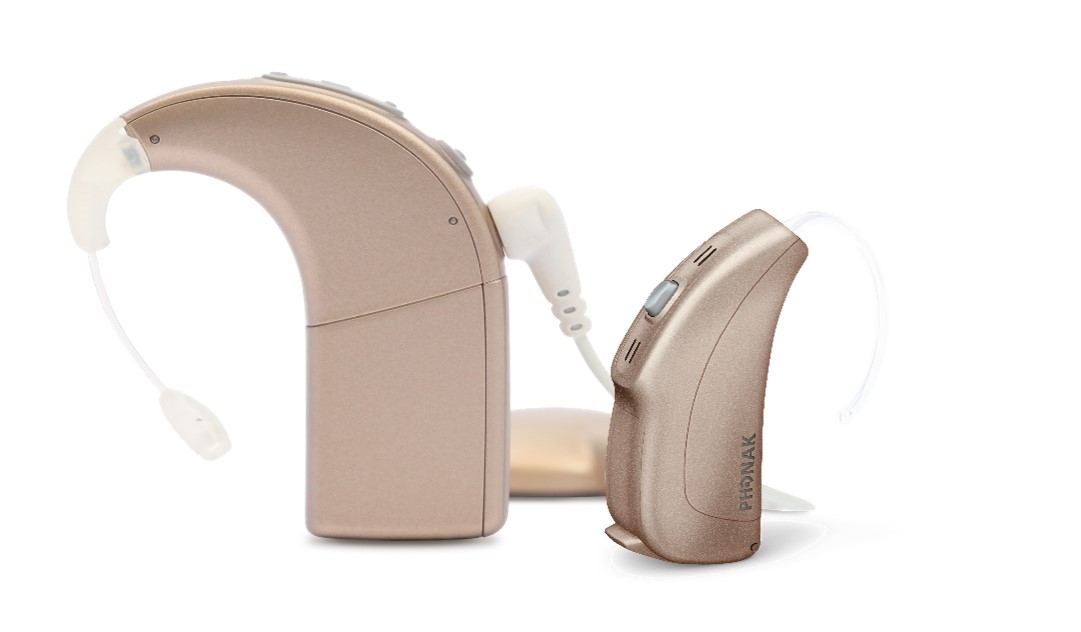
Figure 1. Naída Link CROS Solution.
If a recipient has a Naída CI Q90 or Q70 in one ear and has no functional hearing in the other ear, Naída Link CROS can send sounds from the non-implanted side to the Naída CI. The Naída Link CROS Solution provides recipients with the ability to hear their best in quiet and noise without having to reposition themselves so that their “good” ear is always in the best location.
Challenges of Monaural Hearing
There is a high percentage of unilateral cochlear implant recipients in North America, and a greater percentage worldwide. Individuals with unilateral cochlear implants, like all monaural listeners, may struggle with understanding speech in noise, understanding conversations while in the car, adequate awareness of their surroundings, and the constant need to reposition to hear out of the “good” ear. With all of the known challenges associated with monaural hearing, why do cochlear implant candidates choose unilateral implantation? There are many possible reasons. Some reasons include waiting on future technology, fear of surgery, medical issues that prevent a second surgery, or insurance coverage that does not include bilateral implantation. The Naída Link CROS solution is a great choice for these individuals.
Thanks to the partnership with Phonak, AB is able to take advantage of Phonak’s rich history of experience with CROS technology. Over 100,000 people worldwide have benefited from Phonak’s CROS technology. AB is able to build on this history of success with the newest innovation: Phonak Naída Link CROS (Figure 2).

Figure 2. History of Phonak CROS technology.
CROS
CROS stands for Contralateral Routing of Signal and is a device that is used to transmit sounds to the better hearing ear. AB offers the Naída Link CROS that transmits sounds via Phonak’s proprietary HIBAN (Hearing Instrument Body Area Network) technology instantaneously to Naída CI to provide unilateral recipients with improved sound awareness. Naída Link CROS overcomes the head shadow effect for sound originating on the non-implant side which allows recipients to hear sounds from both sides. Naída Link CROS has no acoustical output.
For individuals with unilateral cochlear implants, the head shadow effect can cause them to miss out on important sounds as shown in Figure 3.

Figure 3. Head shadow effect.
When Naída Link CROS is worn on the non-implanted side to overcome the head shadow effect, recipients can hear from wherever they want (Figure 4)! For example, an individual with a cochlear implant may have trouble understanding a conversation in the car if the speaker is on the non-implanted side. With the Naída Link CROS Solution, the Naída Link CROS will transfer the sound to the recipient’s Naída CI allowing the recipient to easily understand his companion’s voice. The Naída Link CROS Solution provides effortless hearing in all environments with no adjustment required!

Figure 4. The Naída Link CROS Solution overcomes the head shadow effect.
Candidacy
The Naída Link CROS Solution is designed for unilateral AB Naída CI recipients who have an unaidable hearing loss in the non-implanted ear (Figure 5) and who are unable to or choose not to receive bilateral cochlear implants.
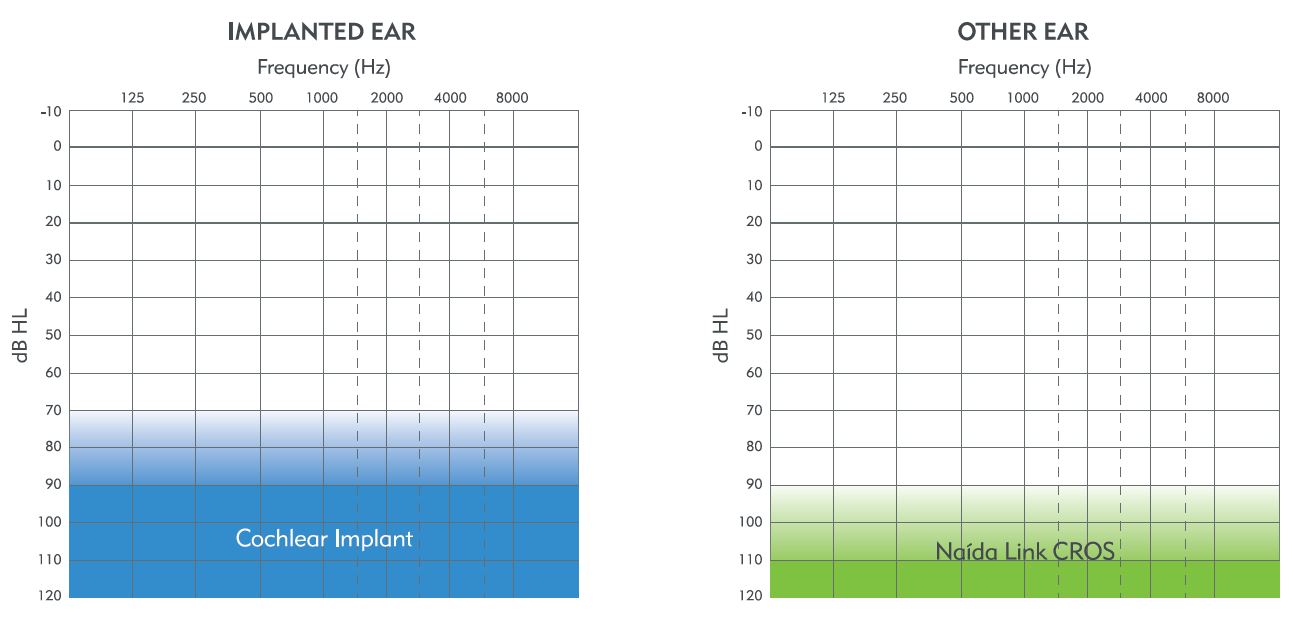
Figure 5. Candidacy criteria for the Naída Link CROS Solution.
Benefits
The Naída Link CROS Solution allows the recipient to hear input from both sides which increases awareness of sound, removes the head shadow effect, provides consistent performance (no matter where the sound originates), provides improved performance in noise, and provides increased patient satisfaction and improved ease of listening as shown in Figure 6 (Ackroyd, 2006; Bronkhorst & Plomp, 1988; Hawley, Litovsky, & Colburn, 1999).

Figure 6. Naída Link CROS benefits.
With all of these benefits, recipients with the Naída Link CROS Solution can enjoy conversation in restaurants without the need to reposition, conversations while walking side-by-side or in the car, and an improved awareness of their surroundings.
Parts, Colors, and Battery Information
The Naída Link CROS parts include microphone input, a push button, a battery compartment (ON/OFF), and the CROS demo hook which are shown in Figure 7.
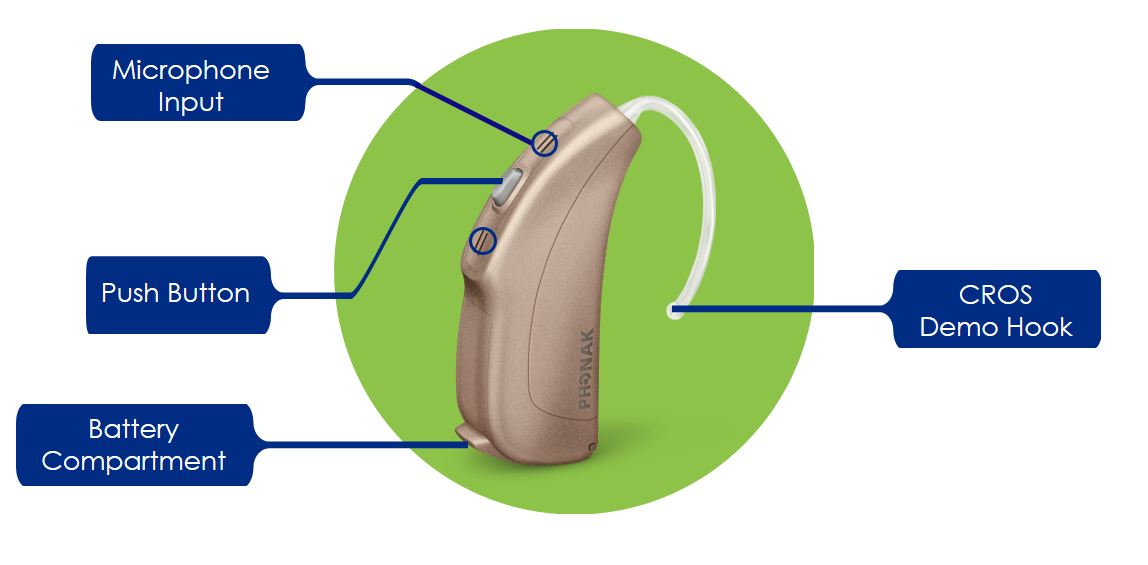
Figure 7. Naída Link CROS parts.
Naída Link CROS is available in 7 colors (Alpine White, Silver Gray, Sand Beige, Chestnut, Velvet Black, Petrol, and Ruby Red) to match Naída CI as shown in Figure 8.

Figure 8. Naída Link CROS colors.
Naída Link CROS requires PowerOne size 13 batteries. It is important that PowerOne brand batteries are used. With PowerOne brand batteries, the expected battery life is three to five days.
Retention Options
There are three retention options available for Naída Link CROS: the CROS Demo Hook, the CROS SlimTube, and the CROSTip as shown in Figure 9.
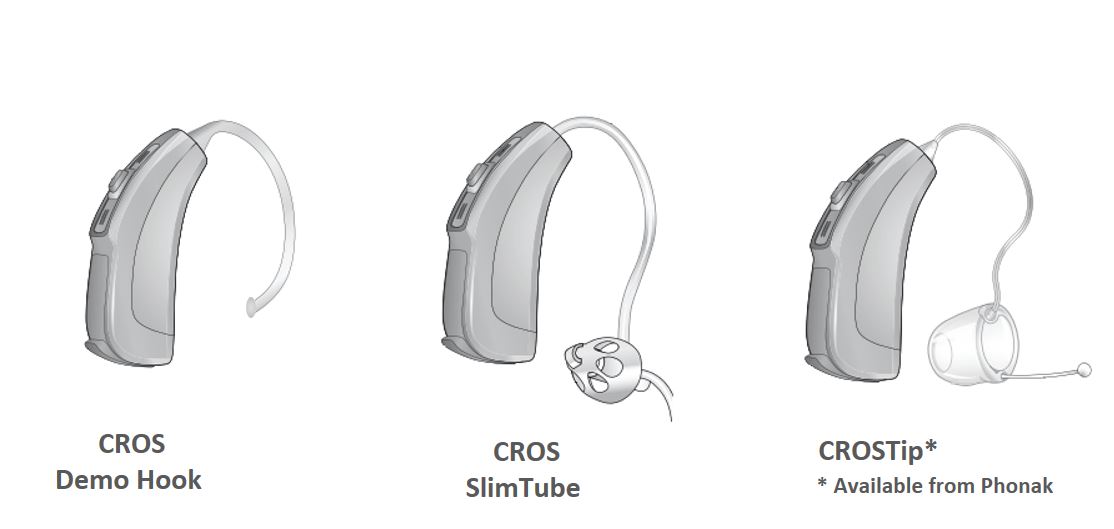
Figure 9. Naída Link CROS retention options.
Naída Link CROS is shipped with a CROS Demo Hook which can be used to demonstrate the Naída Link CROS for the recipient. For daily use, recipients should use CROS SlimTube or CROSTip for optimal retention. CROS SlimTube is recommended as it provides appropriate retention for most recipients. CROS SlimTip is provided by AB in the US. CROSTip can be custom ordered from Phonak in the US if additional retention is required. Naída Link CROS and accessories are provided by Phonak in Canada and Europe.
CROS SlimTube is available in left or right, is available in four different lengths (0, 1, 2, or 3), and has three dome options (small, medium, and large). Providing these options allows the selection of the right length and size to ensure that Naída Link CROS is secure and comfortable for each and every recipient.
Mute
The input from the Naída Link CROS can be muted by using the push button. To stop input from Naída Link CROS, simply push the mute button one time. This places Naída Link CROS in low power state and disables the Naída Link CROS HIBAN signal and microphone. To reactivate Naída Link CROS, simply push the mute button again.
Muting Naída Link CROS is beneficial in environments when noise is on the side of Naída Link CROS. For example, the Naída Link CROS mute function can be beneficial when the Naída Link CROS is on the side of the road noise in the car or when using the phone when excessive noise is on the side of Naída Link CROS as shown in Figure 10.

Figure 10. Environments in which mute is beneficial.
Link Monitoring
With the link monitoring feature, Naída CI continually monitors for a CROS signal as shown in Figure 11. When Naída Link CROS is communicating with Naída CI, the recipient will hear equal input from both Naída CI and Naída Link CROS. But, what happens when Naída Link CROS cannot communicate with Naída CI? When input from Naída Link CROS is not detected, the recipient will hear input from Naída CI only.
This automatic input management with Naída CI’s link monitoring feature ensures that recipients hear their best at all times!
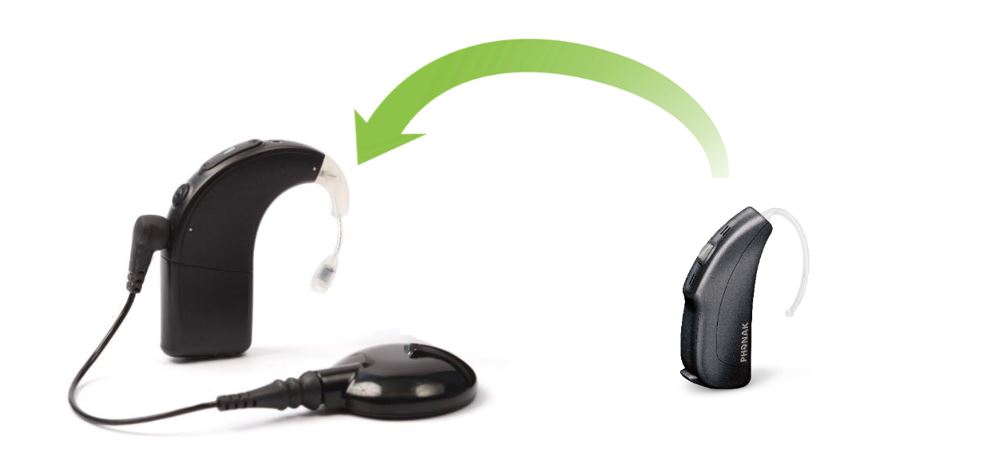
Figure 11. Naída Link CROS Link monitoring.
Mic Matching
Naída Link CROS has a mic matching feature that ensures the microphone state of Naída Link CROS always matches the microphone state of Naída CI. Naída Link CROS adapts automatically to the following Naída CI microphone states: omnidirectional, auto UltraZoom, UltraZoom, and StereoZoom. For example, if a recipient is using auto UltraZoom, Naída Link CROS will automatically adapt to match the microphone state of Naída CI as it changes between omnidirectional and UltraZoom microphone modes. The mic matching feature provides complete ease of use for recipients, allowing them to set it and forget it!
With Naída Link CROS, unilateral cochlear implant recipients have access to StereoZoom, a bilateral beamformer, for the first time. StereoZoom is designed to reduce distracting sounds in noisy places while allowing recipients to focus on a single voice, making one-on-one conversations easier. Naída Link CROS and the mic matching feature will help recipients hear better while having conversations in a noisy environment. For example, in a StereoZoom program, mic matching automatically focuses in front of the recipient and reduces background noise. This allows recipients to hear more of what they want to hear and less of what they don’t.
Roger
Phonak’s Roger technology is the digital standard that provides outstanding performance in noise and over distance by wirelessly transmitting a speaker’s voice directly to the listener. Roger improves the signal-to-noise ratio and provides access to improved speech understanding. More information on Phonak’s Roger technology is available at www.phonakpro.com.
Recipients with the Naída Link CROS solution are able to benefit from Phonak’s proven Roger technology. If a recipient with the Naída Link CROS solution is using Roger (in a 50/50 or 30/70 program), the recipient will hear input from all three inputs: Naída CI, Naída Link CROS, and Roger. This combination allows recipients to overcome the head shadow effect with Naída Link CROS and to experience an improved signal-to-noise ratio with Roger at the same time!
Phonak Wireless HIBAN Accessories
Recipients may want to use wireless HIBAN accessories, such as ComPilot, TV Link, RemoteMic, EasyCall, or DECT Phone, with the Naída Link CROS Solution. HIBAN accessories are given priority over Naída Link CROS when streaming is occurring. When Naída CI receives a signal from the HIBAN accessory, no signal is received from Naída Link CROS. When the HIBAN accessory is turned off, Naída Link CROS will automatically resume streaming to Naída CI (Figure 12). This automatic management of HIBAN and Naída Link CROS input makes it easy for recipients to use wireless accessories with the Naída Link CROS Solution.

Figure 12. Phonak wireless accessories and the Naída Link CROS Solution.
There are many great technologies available for recipients using the Naída Link CROS Solution. Individuals with the Naída Link CROS Solution can access proven noise management features, such as UltraZoom, auto UltraZoom, and StereoZoom, comfort features, such as SoundRelax, WindBlock, and EchoBlock, and wireless accessories, such as Roger, ComPilot, TVLink, Remote Mic, DECT Phone and EasyCall.
For additional information on Naída Link CROS, refer to Resources 2, 3, and 4: Phonak Naída Link CROS User Guide, Phonak Naída Link CROS Datasheet, and Phonak Naída Link CROS Product Information.
Fitting
Naída CI Q90 and Naída CI Q70 are CROS ready in just one step! There are no new programming steps to learn. Simply initialize Naída CI for use with Naída Link CROS in SoundWave Version 3.1 or newer. The CROS initialization option is shown in Figure 13.
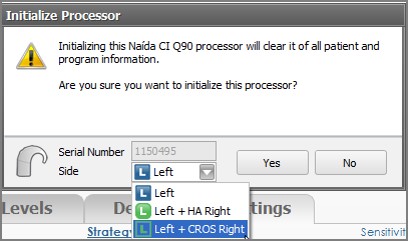
Figure 13. CROS initialization for Naída CI.
A Naída CI that has been initialized for use with Naída Link CROS can be identified by the white and green icon identified in Figure 14.
![]()
Figure 14. New CROS icon.
CROS is enabled by default on a program-by-program basis in the Processor Pane as shown in Figure 15.
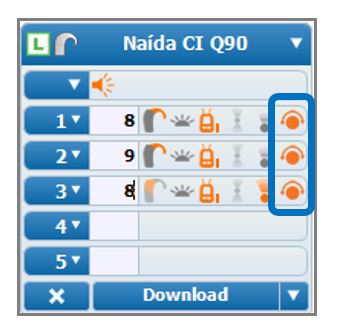
Figure 15. CROS is enabled by default.
StereoZoom can be enabled for recipients with the Naída Link CROS Solution as shown in Program Slot 3 in Figure 16.
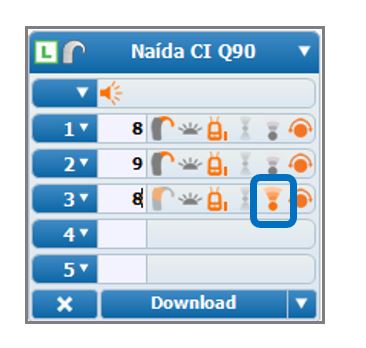
Figure 16. StereoZoom is available for use with the Naída Link CROS Solution.
No fitting is required for Naída Link CROS. Naída Link CROS is ready to use right out of the box. After Naída CI is initialized to be CROS ready, recipients simply place Naída Link CROS on their ear and go!
For additional information on new features in SoundWave 3.1, please view the SoundWave 3.1 tutorial or refer to page two of Resources 5, 6, and 7: Naída Link CROS and SoundWave Quick Reference Guide, SoundWave 3.1 Manual, and SoundWave 3.1 Instructions For Use (IFU).
Summary
The Naída Link CROS Solution allows unilateral Naída CI recipients to benefit from powerful features and leading technology from AB and Phonak to hear from both sides! This simple solution provides the best choice for bilaterally-deafened unilateral cochlear implant candidates. The Naída Link CROS Solution is the new unilateral solution!
Research
Numerous research studies have been conducted on the Naída Link CROS Solution. AB conducted a study that evaluated the communication benefits of the Naída Link CROS. The goal of this study was to provide evidence of the bilateral benefit that can be experienced by unilateral implant recipients who use non-surgical contralateral technology instead of, or prior to, a second cochlear implant. Results of this study can be found in Resource 8, Bilateral Hearing for Unilateral AB Cochlear Implant Recipients.
Additional publications, posters, and presentations include:
- Baumgärtel, R.M., Mathias, N., & Downing, S. (2017). Benefits of using a contralateral routing of signals (CROS) system in unilateral cochlear implant users. European Federation of Audiology Societies (EFAS2017), Interlaken, Switzerland, FP114.
- Briaire, J.J., Taal, C.H., van Barneveld, D.C.P.B.M., Soede, W., Stronks, H.C., & Frijns J.H.M. (2017, May). Contralateral routing of signals can improve speech understanding in noise in unilateral cochlear implant users. Presentation at European Symposium Pediatric Cochlear Implant (ESPCI2017), Lisbon, Portugal.
- Diez, A., Todt, I., Ernst, A., & Battmer, R. (2017, May). Evaluation of a wireless CROS device with the Naída Q90 sound processor. Presentation at European Symposium Pediatric Cochlear Implant (ESPCI2017), Lisbon, Portugal.
- Downing, S. (2017, July). Evaluation of a contralateral routing of signal system for unilateral cochlear implant recipients. Poster presented at 15th International Conference on Cochlear Implants and Other Implantable Technologies (CI2017), San Francisco CA USA. Poster #160.
- Kurien, G., Smith, L., Smilsky, K., Hwang, E., Lin, V., Nedzelski, J., & Chen, J. (2016, May). Addition of a wireless contralateral routing of signal microphone in unilateral cochlear implant users. 14th International Conference on Cochlear Implants and Other Implantable Technologies (CI2016), Toronto, Canada.
- Mosnier, I., Flament, J., Amar-Haziza, D., Mathias, N., & Sterkers O. (2017, May). Use of a contralateral routing of signals (CROS) system in bilaterally deaf recipients with unilateral cochlear implant. Presentation at European Symposium Pediatric Cochlear Implant (ESPCI2017), Lisbon, Portugal.
- Mosnier, I., Flament, J., Amar-Haziza, D., Mathias, N., & Sterkers, O. (2017, June). Benefits of using a contralateral routing of signals (CROS) system in unilateral cochlear implant users. Poster presented at International Federation of Otorhinolaryngological Societies (IFOS2017) conference, Paris, France.
- Snapp, H. (2017, July). Hearing benefit following extended contralateral routing of signal use in unilateral cochlear implant users. Presentation at the 15th International Conference on Cochlear Implants and Other Implantable Technologies (CI2017), San Francisco USA.
- Snapp, H., Liu, X., Hoffer, M., Ozdamar, O., & Rajguru, S.M. (2017, February). Benefit of bilateral input for monaural listeners. Presentation at Association for Research in Otolaryngology (ARO2017), Baltimore MD USA, PS664.
- Snapp, H., Liu, X., & Rajguru, S. (2017, May). Contralateral routing of signal in unilateral CI users. Presentation at European Symposium Pediatric Cochlear Implant (ESPCI2017), Lisbon, Portugal.
- Snapp, H., Rajguru, S., Hoffer, M., & Liu, X. (2016, February). Speech perception in noise in unilateral cochlear implant patients with contralateral routing of signal. Poster at Association for Research in Otolaryngology (ARO2016) conference, San Diego CA USA.
- Taal, C.H., van Barneveld, D.C., Soede, W., Briaire, J.J., & Frijns JH. (2016) Benefit of contralateral routing of signals for unilateral cochlear implant users. Journal of the Acoustical Society of America, 140(1), 393-401. doi: https://dx.doi.org/10.1121/1.4955307
Frequently Asked Questions
Q. What is the Naída Link CROS Solution?
A. The Naída Link CROS Solution, from AB and Phonak, is the first wireless CROS solution for use with a cochlear implant. The Naída Link CROS is designed for use with AB’s Naída CI Q90 and Q70 sound processors exclusively.
Q. Who is a candidate for the Naída Link CROS Solution?
A. The Naída Link CROS Solution is intended for CI candidates and recipients unilateral AB Naída CI recipients who have an unaidable hearing loss in the non-implanted ear and who are unable to or choose not to receive bilateral cochlear implants. Recipients with other cochlear implant manufacturer brands will not be able to take advantage of the Naída Link CROS, since the Naída Link CROS is only designed to work contralateral to the Naída CI Q90/70 sound processor.
Q. What are the benefits of the Naída Link CROS Solution?
A. The Naída Link CROS Solution is The Simple Way to Hear More. It provides AB’s unilateral cochlear implant recipients with bilateral access to sounds so that they can hear from wherever they want, and walk into any listening situation with confidence. Just switch it on and enjoy hearing from both sides.
Q. When will the Naída Link CROS be available for purchase?
A. The Naída Link CROS is available in the US, Canada, and Europe now.
Q. How will recipients order/obtain a Naída Link CROS?
A. In the US, Naída Link CROS will only be available from AB LLC. In Canada and Europe, Naída Link CROS and accessories will be available from Phonak. Existing Naída CI Q90/70 recipients need to contact their audiologist/clinic to express interest in the Naída Link CROS.
Q. What version of SoundWave is required to program Naída CI for use with Naída Link CROS?
A. SoundWave version 3.1 or newer.
References
Ackroyd, M.A. (2006) The psychoacoustics of binaural hearing. International Journal of Audiology, 45, S25-33.
Bronkhorst, A.W., & Plomp, R. (1988) The effect of head-induced interaural time and level differences on speech intelligibility in noise. Journal of the Acoustical Society of America, 83,1508-1516.
Gifford, R.H., Davis, T.J., Sunderhaus, L.W., Driscoll, C.L.W., Fiebig, P., Micco, A., & Dorman, M.F. (2015). A within subjects comparison of bimodal hearing, bilateral cochlear implantation, and bilateral cochlear implantation with bilateral hearing preservation: High-performing patients. Otology & Neurotology, 36(8), 1331–7. PMID: 26164443
Gifford, R.H., Dorman, M.F., Sheffield, S.W., Spahr, A.J., Teece, K., & Olund, A.P. (2014). Availability of binaural cues for bilateral cochlear implant recipients and bimodal listeners with and without hearing preservation. Audiology and Neurotology, 19(1), 57–71. PMID: 24356514
Hawley, M.L., Litovsky, R.Y., & Colburn, H.S. (1999). Speech intelligibility and localization in a multi-source environment. Journal of the Acoustical Society of America, 105(6), 3436-3448.
Mosnier, I., Flament, J., Amar-Haziza, D., Mathias, N., & Sterkers, O. (2017, May). Use of a Contralateral Routing Of Signals (CROS) system in bilaterally deaf recipients with unilateral cochlear implant. Presentation at the 13th European Symposium on Pediatric Cochlear Implants, Lisbon, Portugal.
Citation
Hambrick, L., & Vaden, K. (2017, August). The simple way to hear more with the Naida Link CROS Solution. AudiologyOnline, Article 20778. Retrieved from www.audiologyonline.com

